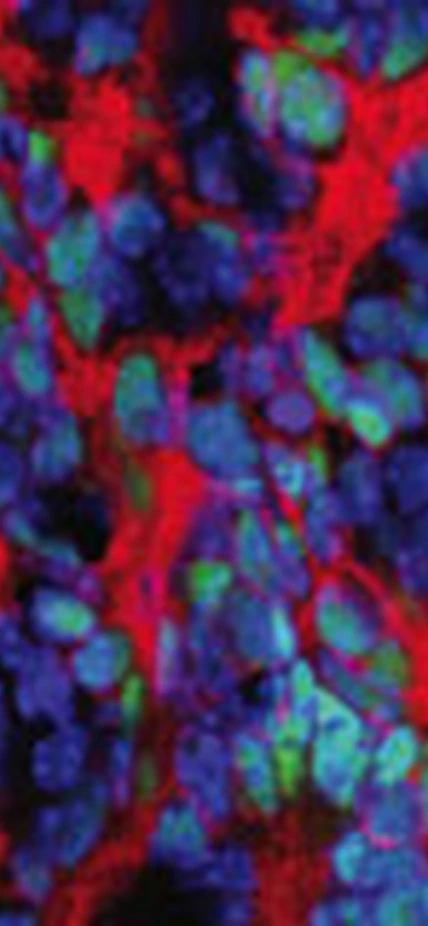Baltimore, MD — New research from a team including several Carnegie scientists demonstrates that a specific small segment of RNA could play a key role in the growth of a type of malignant childhood eye tumor called retinoblastoma. The tumor is associated with mutations of a protein called Rb, or retinoblastoma protein. Dysfunctional Rb is also involved with other types of cancers, including lung, brain, breast and bone. Their work, which will be the cover story of the August 15th issue of Genes & Development, could result in a new therapeutic target for treating this rare form of cancer and potentially other cancers as well.
MicroRNAs are a short, single strands of genetic material that bind to longer strands of messenger RNA--which is the courier that brings the genetic code from the DNA in the nucleus to the cell’s ribosome, where it is translated into protein. This binding activity allows microRNAs to silence the expression of select genes in a targeted manner. Abnormal versions of microRNAs have been implicated in the growth of several types of cancer.
The paper from Carnegie’s Karina Conkrite, Maggie Sundby, and David MacPherson--as well as authors from other institutions—focuses on a cluster of microRNAs called miR-17~92. Recent research has shown that aberrant versions of this cluster are involved in preventing pre-cancerous cells from dying and allowing them to proliferate into tumors. Previous work has shown that miR-17~92 can be involved in the survival of lymphoma and leukemia cells by reducing the levels of a tumor-suppressing protein called PTEN.
The team’s new research shows that miR-17~92 can also be involved in retinoblastoma, although it does not act in the same way, via the PTEN protein, as it does in other types of cancers. Rather, miR-17~92 acts to help cells that lack the tumor-suppressing Rb protein to proliferate.
First the team demonstrated that miR-17~92 is expressed in higher-than-usual quantities in all human retinoblastomas examined and in some mouse retinoblastomas. The authors engineered mice to express high levels of miR-17~92 in their retinas. When coupled with inactivation of Rb family members, expression of miR-17~92 led to extremely rapid and aggressive retinoblastoma. Then they showed that this abundance of miR-17~92 acts to suppress an inhibitor of proliferation, called p21Cip1, which is supposed to compensate for the loss of Rb.
“These findings— which show that miR-17~92 overcomes the cell’s attempts to compensate for the loss of Rb—could be similar in other types of cancers,” MacPherson said. “This microRNA cluster could represent a new therapeutic target for treating tumors caused by Rb deficiency.”
The paper is published today on the journal’s website.
Image Caption: A close-up picture of retinoblastoma cells stained with two retinoblastoma markers, courtesy of David MacPherson.
________
Portions of this work were funded by grants from the National Institutes of Health, the National Cancer Institute, the Knights Templar Eye Foundation, the Mukai Fund, and the Massachusetts Eye and Ear Infirmary.
